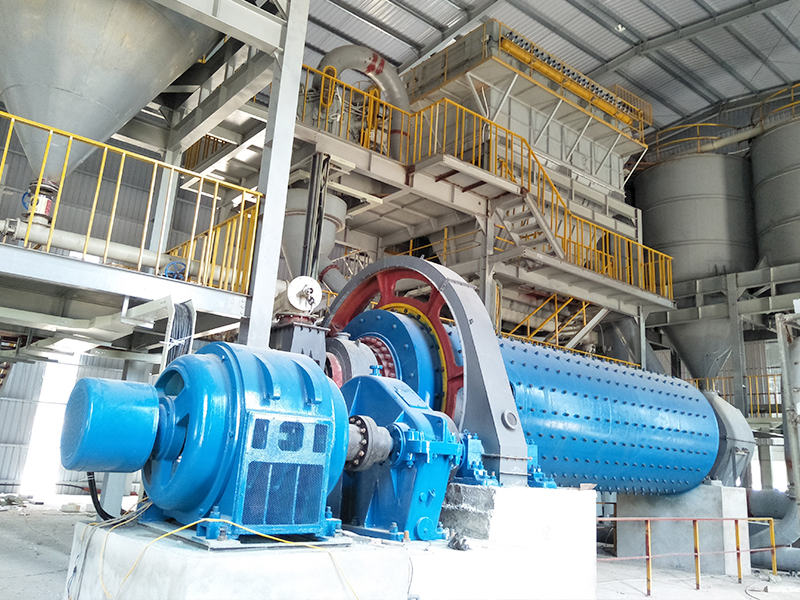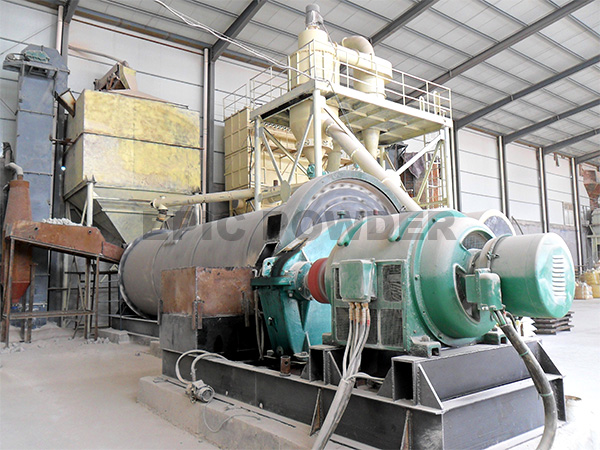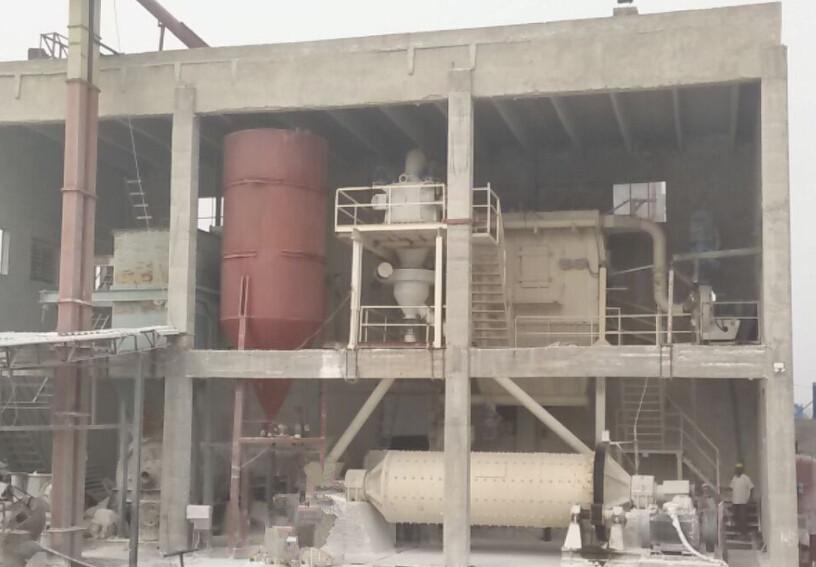NO. 369, Road S209, Huanxiu, Qingdao City, China
Agitating mill
Application of stirring mill in grinding of non-metallic minerals such as mica, kaolin and graphite
Both the agitating mill and the traditional horizontal ball mill have a grinding cylinder, but unlike the traditional horizontal ball mill, the grinding cylinder of the agitating mill is static, and the rotation of the agitator drives the interaction between the grinding medium and minerals in the grinding cylinder to produce impact, shear, and friction, so that the feed ore particles are ground, and also has the effect of ore particle dispersion and mixing.The mixing mill can be divided into vertical type and horizontal type according to the installation mode. It can be divided into circular type, continuous type, and intermittent type according to the production mode. It can be divided into spiral type, rod-pin type, and disk type according to the structure of the mixing disperser of the grinding unit. The grinding media used in the mixing mill are from a wide range of sources, mainly steel balls, ceramic balls, gravel, river sand, and smelting slag.
Unlike metal ore, nonmetallic ore is a kind of mineral resource with a wide variety and a huge amount. The nature of each mineral is quite different, but the commonality is less. The application field and value of nonmetallic ore generally depend on the degree to which its congenital properties are protected and subsequently applied. In addition to the requirement of monomer dissociation and appropriate particle size distribution, there are also obvious differences and special requirements between non-metallic ore and metallic ore in terms of grinding, that is, for the morphology, structure, and performance characteristics of non-metallic ore, special emphasis is placed on not being damaged in the grinding process as much as possible, adding the special requirements of non-metallic ore grinding operation on the stirring mill, but the stirring mill has also been successfully applied in non-metallic ore grinding.
1. Application of stirring mill in mica ore grinding
Mica is a layered aluminosilicate mineral with the advantages of insulation, high-temperature resistance, high refractive index, and strong toughness. The utilization of mica has special requirements for diameter-thickness ratio, particle size distribution, surface finish, gloss, etc. The traditional ball mill is difficult to meet the grinding requirements. A stone mill or wheel mill is often used for grinding, but the vertical stirring mill is also used for fine grinding of mica flakes.
For a high-temperature calcined muscovite imported from India, a vertical stirring mill with polyurethane ball as grinding medium is used Φ 8mm、 Φ 10mm and Φ When the ratio of 12mm ball is 2:5:1, the mill speed is 240r/min, and the grinding mass fraction is 55%, the content of 0.020~0.045mm particles in the grinding product is the largest, and the mica particles are uniform, the surface is smooth, the edge is toothless, the thickness is about 750 µ m, and the diameter to thickness ratio is more than 100 times.
GJ5 is adopted by a mica concentrator in Henan × 2. The large double-groove high-strength stirring mill is used for mica stripping. The production commissioning shows that the process flow of mica stripping of the stirring mill is simple, the energy consumption is low, and there is no pollution to the mica product. When the grinding mass fraction is about 50%, the alumina ceramic bead is used as the grinding medium, the loading capacity is 9t, and the grinding aid content is 0.5% of the dry ore, the mica stripping can achieve good results.
2. Application of stirring mill in kaolin grinding
Kaolin has excellent physical and chemical properties and is widely used in ceramics, paper, rubber, plastics, and other fields. Kaolin stripping is an important process for its deep processing and utilization, mainly including mechanical stripping and chemical reagent stripping. A stirring mill has been successfully applied to the stripping of kaolin, which has far-reaching significance for the utilization of kaolin.
A kaolin mine in Yichang, Hubei Province, used a stirring mill for a peeling test. Before grinding, the dispersant sodium hexametaphosphate was added, and the corundum ball in the grinding was stirred( Φ= 1.2 mm) and small ball( Φ= When the volume ratio of 0.8mm) is 0.8:1.5, the medium filling rate is 70%, the grinding mass fraction is 70%, the stripping speed is 800r/min, and the grinding time is 180min, the stripping product - 2 µ m particle fraction yield is 96.62%, and the stripping improves the whiteness of clinker by 5.24 percentage points.
Shanxi Jinkun Mineral Products Co., Ltd. calcines coal series kaolin with GJ5 × 2. Large double-tank high-strength stirring mill strip, with a feed particle size of - 45 µ m and a production capacity of 1.2~1.5 t/h, the particle size of a single product can reach - 2 µ m, accounting for more than 85%, and the particle size of two series products can reach - 2 µ m, accounting for more than 90%. One stirring mill can replace 10 early small peeling machines, greatly reducing the number of equipment, simplifying the process, reducing the number of operators, and reducing the labor intensity of operators.
3. Application of Stirring Mill in Graphite Ore Grinding
Graphite can be divided into crystalline graphite (flake) and aphanitic graphite (earthy) according to its crystallization. Graphite plays a key role in many fields because of its high tehigh-temperatureance, corrosion resistance, thermal shock resistance, high strength, good toughness, high self-lubricating strength, heat conduction, conductivity, plasticity, coating, and ot, her characteristics. The scale structure of flake graphite is easily damaged and cannot be regenerated during grinding, so protecting and improving the yield of large slarge-scalete and the quality of concentrate are theisy and difficult points of graphite beneficiation.
According to the experimental study of scale graphite grinding in Yichang, Hubei Province, a graphite concentrate with a grade of about 93% and a recovery rate of 91.60% can be obtained by using the process flow of five-stage regrinding and six times cleaning for the concentrator; Through four stages of regrinding and four times of cleaning closed-circuit tests, a graphite concentrate with a grade of 92.58% and a recovery rate of 94.71% can be obtained by using a vertical stirring mill, and the output of large scale graphite in the concentrate is 31.62 percentage points higher than that in the field, which fully proves the protective effect of the vertical stirring mill on scale graphite.
An industrial test of the GJM rod stirring mill was carried out in a scale graphite concentrator in Heilongjiang Province. The stirring mill was used to replace the original regrinding equipment at the third stage of regrinding. Under the same conditions, the grade of flotation concentrate increased by more than 40% after the use of stirring mill regrinding, the consumption of grinding medium was only about 50%, the energy consumption was reduced by more than 25%, and the protective effect of large scale graphite was better.




Leave a Comment